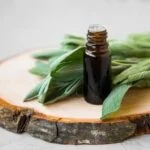Are you looking for the perfect aromatherapy diffuser to enhance your home or work space? If so, you’re in luck. In this article, we’ll discuss what to look for in an aromatherapy diffuser to suit your needs and preferences.
Aromatherapy has become increasingly popular due to its many benefits, including stress relief, improved sleep, and enhanced mood. Whether you are new to aromatherapy or a seasoned practitioner, finding the right diffuser is essential for achieving the desired therapeutic effects.
Aromatherapy is the practice of using natural oils extracted from flowers, bark, stems, leaves, roots or other parts of a plant to enhance psychological and physical well-being. These essential oils can be used individually or blended together to create a specific ambiance or promote various health benefits.
When it comes to choosing an aromatherapy diffuser, there are several factors to consider in order to fully experience the benefits of essential oils. From different types of diffusers to compatibility with a wide range of essential oils, these factors play a crucial role in determining which diffuser is best suited for your needs.
In this article, we will delve into the various aspects of selecting an ideal aromatherapy diffuser that meets your unique requirements and preferences. From understanding the different types of diffusers available on the market to exploring compatibility with essential oils and considering design aesthetics and maintenance requirements, we aim to equip you with valuable information that will help guide your decision-making process when selecting an aromatherapy diffuser.
After all, creating a soothing and harmonious environment through aroma diffusion begins with choosing the right device.
Types of Aromatherapy Diffusers
When considering what to look for in an aromatherapy diffuser, it is important to understand the different types available in the market. Each type of diffuser has its own advantages and disadvantages, so it’s crucial to choose one that aligns with your needs and preferences. Here are the various types of aromatherapy diffusers to consider:
- Ultrasonic Diffusers: These diffusers use ultrasonic vibrations to disperse a fine mist of water and essential oils into the air. They are popular for their ability to humidify the air while creating a soothing aroma.
- Nebulizing Diffusers: Nebulizing diffusers do not require water and use only pure essential oils. They work by breaking down the oil into tiny particles, which are then released into the air in a concentrated form, making them ideal for therapeutic purposes.
- Heat Diffusers: Heat diffusers use heat to evaporate essential oils and disperse their aroma into the air. While they are simple in design and operation, they may alter the chemical composition of certain essential oils due to the application of heat.
When choosing an aromatherapy diffuser, it is important to consider factors such as ease of use, maintenance requirements, and personal preferences regarding aroma intensity. Understanding the differences between ultrasonic, nebulizing, and heat diffusers can help you make an informed decision based on your specific needs. As you explore the various options available, keep in mind that each type of diffuser can offer a unique experience when used with different essential oils.
Lastly, when selecting an aromatherapy diffuser, take into account factors such as room size and intended purpose. For example, some diffusers may be more suitable for smaller spaces like offices or bedrooms, while others may be better suited for larger areas such as living rooms or open-concept spaces. By considering these factors alongside the type of diffuser, you can narrow down your choices and find the perfect match for your aromatherapy needs.
By understanding the differences between ultrasonic, nebulizing, and heat diffusers and evaluating their suitability for your space and preferences, you can make an informed decision when choosing an aromatherapy diffuser that best fits your lifestyle.
Essential Oil Compatibility
When looking for an aromatherapy diffuser, one of the most crucial factors to consider is its compatibility with a wide range of essential oils. Essential oils have different viscosities and compositions, which can affect how well they diffuse and how long they last in a diffuser. It’s important to choose a diffuser that can effectively disperse a variety of essential oils, giving you the flexibility to use different scents based on your mood, needs, or preferences.
Viscosity and Composition of Essential Oils
Essential oils come in varying viscosities and compositions. Some are thin and watery, while others are thicker and more viscous. This can impact how well they evaporate and disperse through a diffuser. A diffuser with narrow channels or intricate parts may not be suitable for thicker essential oils, leading to clogging or inefficient diffusion. When choosing a diffuser, look for one that is designed to handle various types of essential oils without compromising performance.
Versatility in Scent Options
The ability to use a wide range of essential oils allows you to customize your aromatherapy experience based on your specific needs. Whether you prefer relaxing scents like lavender and chamomile, uplifting fragrances like lemon and peppermint, or exotic blends like patchouli and sandalwood, having a diffuser that is compatible with different types of essential oils gives you the freedom to experiment and create unique scent combinations.
Multi-Use Functionality
In addition to using single essential oils, some individuals enjoy creating their own custom blends by combining different scents. When selecting an aromatherapy diffuser, consider one that can accommodate these custom blends without any adverse effects on the device’s performance or longevity. The ability to smoothly transition between various essential oils while ensuring consistent diffusion is an important feature to look for in an aromatherapy diffuser.
By prioritizing compatibility with a wide range of essential oils when looking for an aromatherapy diffuser, you can ensure that your chosen device meets your diverse scent preferences and provides optimal performance for all your aromatherapy needs.
Diffusion Method
When choosing an aromatherapy diffuser, it is important to consider the diffusion method used and its impact on aroma dispersion. There are several different diffusion methods available, each with its own advantages and disadvantages. Understanding the differences between these methods can help you make an informed decision when selecting a diffuser for your home or workspace.
Types of Diffusion Methods
One of the most common diffusion methods is ultrasonic diffusion, which uses electronic frequencies to create vibrations that disperse essential oils into the air as a fine mist. Another popular option is nebulizing diffusion, which breaks down essential oils into a more concentrated form before dispersing them into the air. Heat diffusion relies on heat to evaporate essential oils and release their aroma into the surrounding space.
Impact on Aroma Dispersion
The diffusion method used can have a significant impact on how effectively and evenly the aroma is dispersed throughout a room. Ultrasonic diffusers are known for creating a consistent and long-lasting aroma, while nebulizing diffusers are prized for their ability to maintain the therapeutic properties of essential oils. Heat diffusers may be more limited in their ability to disperse aroma evenly, but they can still provide a pleasant scent in smaller spaces.
Considering
Design and Aesthetic
When looking for an aromatherapy diffuser, it’s essential to consider not only its functionality but also how well it fits into the aesthetic of the room. The design of a diffuser can significantly impact the overall ambiance and feel of a space, making it an important factor to consider when making a purchase decision. Here are some key elements to consider when evaluating the design and aesthetic of an aromatherapy diffuser:
- Size and Shape: Consider the size and shape of the diffuser in relation to the room where it will be used. A smaller diffuser may be more suitable for a bedroom or office, while a larger one could work well in a living room or open space.
- Material and Finish: Pay attention to the material and finish of the diffuser. A wood or ceramic finish may complement natural or bohemian decor styles, while a sleek metallic finish might be more suitable for modern or minimalist spaces.
- Lighting Options: Some diffusers come with LED lighting options that can add to the ambiance of a room. Look for a diffuser with customizable lighting settings if you want to create specific moods or atmospheres.
Considering these design and aesthetic aspects will ensure that your aromatherapy diffuser not only functions well but also enhances the overall look and feel of your living or working space. Finding a balance between style and functionality will make using your diffuser a more enjoyable experience while adding to the visual appeal of your surroundings.
In addition, taking some time to think about how the aromatherapy diffuser fits into your overall decor can help create a cohesive and harmonious environment. By prioritizing both design and functionality, you can find an aromatherapy diffuser that complements your personal style and enhances the atmosphere of your home or workspace.
Timer and Settings
When looking for an aromatherapy diffuser, it is important to consider the timer and settings options that are available. The flexibility of the timer and settings can greatly impact the user experience and how the diffuser fits into your daily routine.
A diffuser with customizable timer options allows you to control how long the device runs, whether it’s for a short burst of aroma or for an extended period of time. Similarly, adjustable settings for mist intensity and light features can enhance the overall ambiance and effectiveness of the aromatherapy experience.
One key feature to look for in a diffuser is a built-in timer with multiple interval options. This allows you to choose how long you want the diffuser to run before automatically shutting off, whether it’s 1 hour, 3 hours, or continuous mode.
Some diffusers even offer intermittent settings, which can be useful for creating a consistent aroma throughout the day without having the diffuser constantly running. Additionally, having multiple mist intensity levels gives you more control over the strength of the aroma being dispersed, catering to personal preferences and room size.
In addition to timers and mist intensity settings, consider if the diffuser offers customizable light features. Many aromatherapy diffusers come with LED light options that can double as a relaxing nightlight or complement your room’s ambiance.
Being able to adjust the brightness or color of the lights adds another layer of customization to your aromatherapy experience. When considering what to look for in an aromatherapy diffuser, having flexible timer and settings options can make a noticeable difference in how well it integrates into your daily life.
| Feature | Description |
|---|---|
| Built-in Timer | Allows for automatic shut-off after set time intervals |
| Mist Intensity Control | Adjustable settings for controlling strength of aroma dispersion |
| Customizable Light Features | Options for adjusting brightness or color of LED lights |
Noise Level
Aromatherapy diffusers are a popular way to enjoy the benefits of essential oils in the comfort of your home. However, one important factor to consider when choosing the right diffuser is the noise level. The impact of noise level on the overall user experience can greatly affect how you enjoy and benefit from aromatherapy.
When looking for a quiet aromatherapy diffuser, it’s important to consider the type of diffuser. Ultrasonic diffusers are known for their quiet operation, making them a great choice for those sensitive to noise. These diffusers use ultrasonic vibrations to disperse the essential oil into the air without creating any disruptive sound.
Another factor to look for in a quiet diffuser is the size and power of the motor. A smaller, more powerful motor will often result in quieter operation compared to larger, less powerful motors. Additionally, some diffusers come with adjustable settings that allow you to control the intensity and noise level of the diffusion, providing a customizable experience based on your preference.
In addition to the type and motor size, it’s also helpful to read reviews and seek recommendations from other users who have purchased and used specific aromatherapy diffusers. This can provide valuable insight into the actual noise level experienced by real users in different environments and help inform your decision when choosing a quiet diffuser that suits your needs.
| Factors to Consider | Considerations |
|---|---|
| Type of Diffuser | Ultrasonic diffusers are quiet |
| Motor Size and Power | A smaller, more powerful motor is often quieter |
| User Reviews | Seek recommendations from other users for real insights into noise levels |
Maintenance and Cleaning
In conclusion, when looking for an aromatherapy diffuser, it is important to consider several key factors to ensure that you select the right one for your needs. Understanding the benefits and uses of aromatherapy in everyday life is essential in choosing a diffuser that will best suit your lifestyle and preferences. Additionally, exploring the different types of diffusers such as ultrasonic, nebulizing, and heat diffusers can help you determine which one aligns with your desired aroma dispersion method.
Furthermore, essential oil compatibility is crucial when selecting an aromatherapy diffuser. It’s important to choose a diffuser that is compatible with a wide range of essential oils to maximize the benefits of aromatherapy.
The design and aesthetic of the diffuser should also be considered, as it should complement the decor of the room where it will be placed. Flexible timer and settings options, as well as noise level, are also important features to take into account when making your selection.
Lastly, maintenance and cleaning guidelines are crucial for ensuring optimal performance and longevity of your chosen aromatherapy diffuser. By considering these various factors, you can make an informed decision on what to look for in an aromatherapy diffuser that best suits your needs and preferences.
Frequently Asked Questions
What Should I Look for When Buying a Diffuser?
When buying a diffuser, it’s important to consider the size of the room you want to use it in. Look for a diffuser with a capacity suitable for the space. Also, consider the type of diffuser – ultrasonic, nebulizing, or heat. Each type has its own benefits and drawbacks.
What Makes a Good Aromatherapy Diffuser?
A good aromatherapy diffuser should be easy to use and clean. It should also have a sufficient run time so you don’t have to constantly refill it. The ability to adjust the intensity of the aroma is also important, as well as having a timer feature for added convenience.
What Is the Best Material for Essential Oil Diffuser?
The best material for an essential oil diffuser is typically ceramic or BPA-free plastic. These materials do not react with the essential oils and do not leach harmful substances into your air or oils. It’s also important that the material is durable and long-lasting to ensure the longevity of the diffuser.

Are you looking for a natural way to improve your health and wellbeing?
If so, aromatherapy may be the answer for you.





